Tamari is a vegan and gluten free soy sauce that adds a deep and savory flavor to many dishes such as noodles, stir fries, and rice. It's also the perfect base for creating amazing sauces to top all of your favorite bowls!
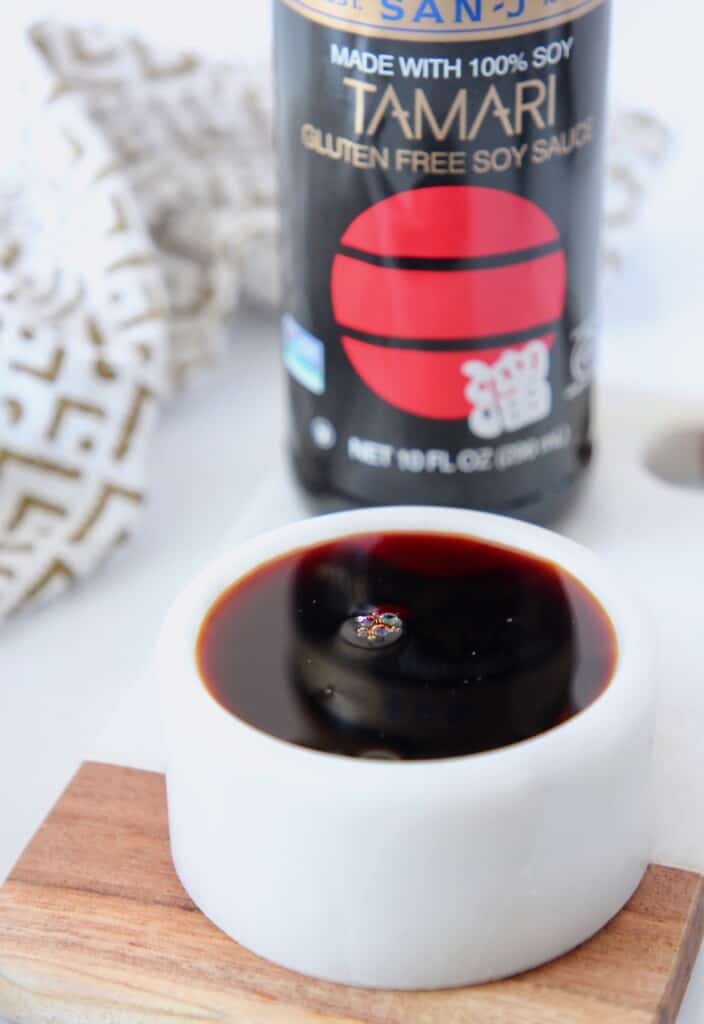
This Japanese sauce is made from fermenting soybeans. It was discovered when it pooled on top of miso during the fermentation process, and has since been used as a soy sauce.
It's a darker color and has a stronger flavor than Chinese soy sauces you may be more familiar with. Tamari has become popular in recent years for those on a gluten free diet, because it is not made with wheat, like traditional soy sauce.
Jump to:
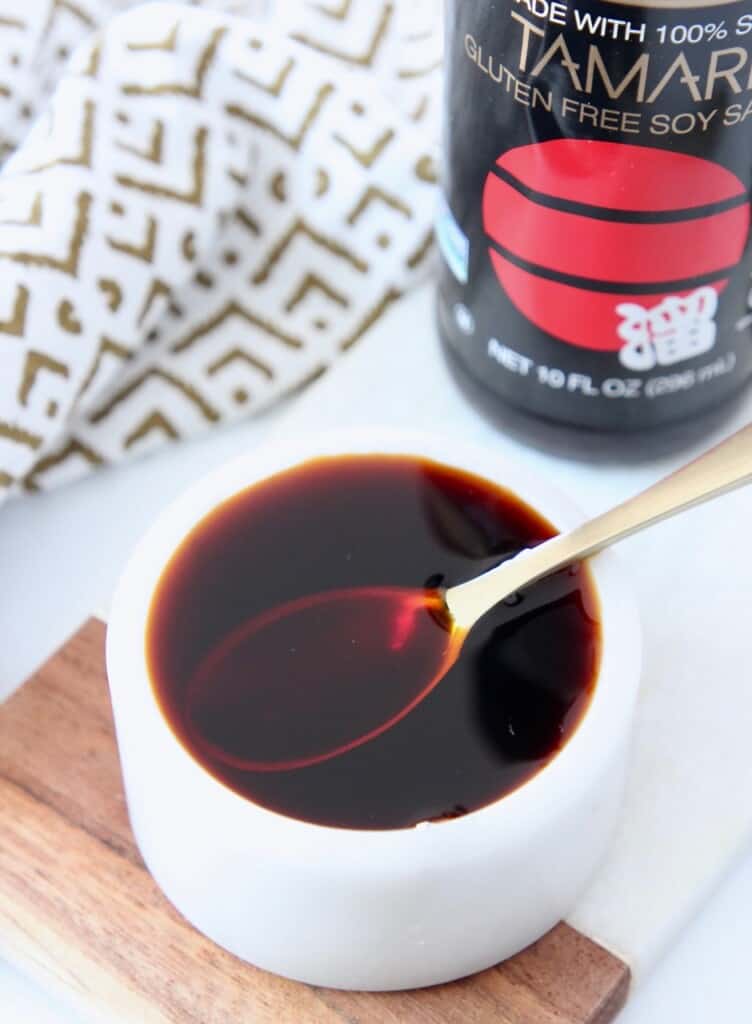
What does it taste like?
Tamari has a flavor referred to as umami, which means "pleasant savory taste". It's similar to soy sauce in flavor, but is less salty and has a deeper, more balanced flavor. The rich, smooth flavor is less harsh than traditional soy sauce, making it more ideal for dipping.
Tamari vs soy sauce
Tamari is actually a variety of soy sauce. However, it is processed differently than regular soy sauce.
Four ingredients are generally used in traditional Chinese soy sauce: soybeans, water, salt, and wheat. After fermenting, the liquid is extracted, pasteurized, and bottled. Tamari sauce is actually a byproduct of miso, it's the liquid that accumulates on top of fermented miso while it's aging.
Most tamari contains no wheat, making it gluten free, whereas traditional soy sauce generally has a 1:1 ratio of soybeans and wheat. Wheat helps to sweeten soy sauce, so the absence of wheat in tamari lets the soybeans shine, giving it that stronger umami flavor.
Is it healthier than soy sauce?
Tamari and soy sauce are very similar to one another as far as nutrition goes. Tamari contains 10 calories, 980 mg of sodium, 1g carbs, and 2g of protein in one tablespoon. For the same amount, soy sauce is almost identical.
Most tamari is gluten free as it is not made with wheat like other soy sauces. However, some are processed with a small amount of wheat, so if you are sensitive to gluten, make sure you check the label.
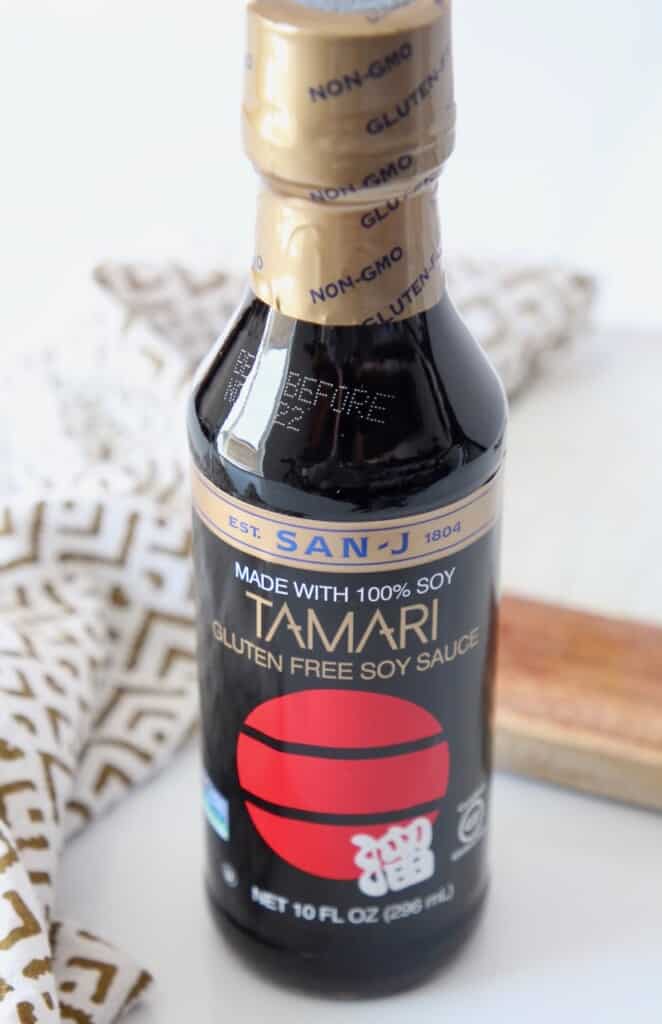
Tamari vs coconut aminos
Tamari is made almost entirely from miso, which is made from soybeans. Those avoiding soy should use an alternative like coconut aminos.
Both tamari and coconut aminos have a salty umami flavor, but coconut aminos are more mild and sweet. Additionally, coconut aminos have less sodium and do not contain any soy.
Tamari vs shoyu
Shoyu is a name for Japanese soy sauce, there are 5 types of soy sauce, and tamari is one of them. The variations come from their fermentation process, wheat content, flavor, and thickness.
Tamari soy sauce is wheat free, has a thicker consistency, and a stronger taste than the other types of shoyu.
How to use it
Due to its deep umami flavor, tamari is a great way to add a rich savory feel to many dishes, including vegan and vegetarian recipes.
- Vegetables - season veggies with the savory sauce either in a pan on the stove, or make Oven Roasted Vegetables.
- In stir fries - add the perfect umami flavor to all your favorites, like Teriyaki Chicken Stir Fry.
- Noodles - include it in a variety of noodle dishes like ramen, sesame noodles, soba noodles, or Vegetarian Massaman Curry Noodles.
- Rice - add extra flavor to steamed rice, or give a deeper flavor profile to fried rice, like in this recipe for Kimchi Fried Rice.
- Salad dressings - create extra flavorful salad dressings, such as Miso Vinaigrette.
- Marinades - use it to marinate meat, fish, tofu, or veggies. I like to use it for chicken in this Thai Chicken Satay recipe.
- Condiment - make tasty sauces like Sweet Sesame Sauce with tamari, or use it on it's own as a dipping sauce for dumplings, egg rolls, or sushi!
Where to buy it
Tamari can be found at most grocery stores. It will likely be in the international aisle next to the soy sauce, teriyaki sauce and sesame oil.
You can also find it on Amazon, where you can purchase bottles of San J tamari from 64 ounces, down to 10 ounces. I like to stock up on the larger bottles because I use it in so many recipes!
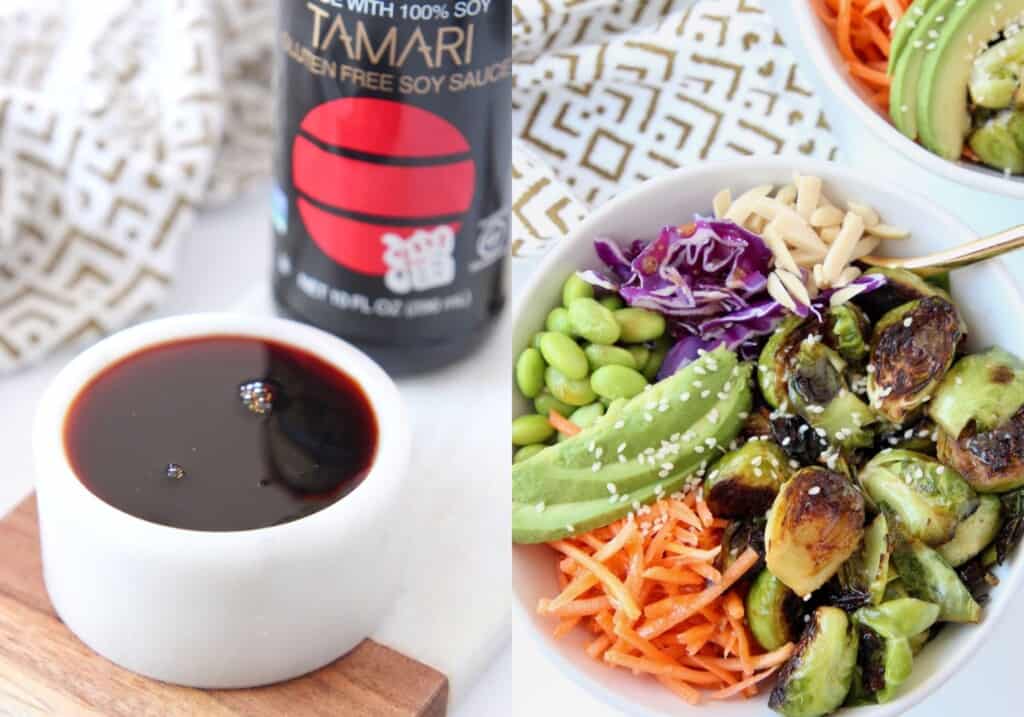
Easy recipes to make with tamari
Use it as a marinade or sauce in these delicious recipes!
- Sesame Seared Tuna Sushi Bowls
- Shrimp Taco Bowl with Creamy Chipotle Sauce
- Caribbean Jerk Chicken Bowls
- Crispy Asian Brussels Sprouts Bowl - pictured above
- Vegetarian Dan Dan Noodles
- Korean Fried Cauliflower
Learn about more of our favorite ingredients
Check out our ingredient guide, packed full of information about all of our favorite lesser-known ingredients, like harissa, quinoa and turmeric!




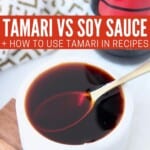

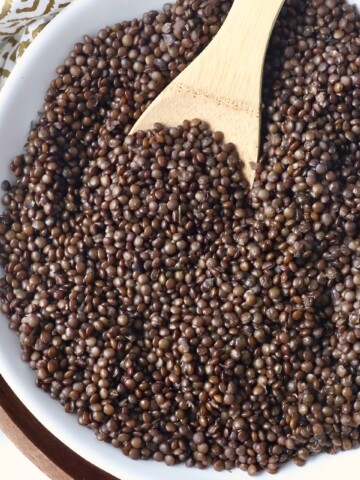
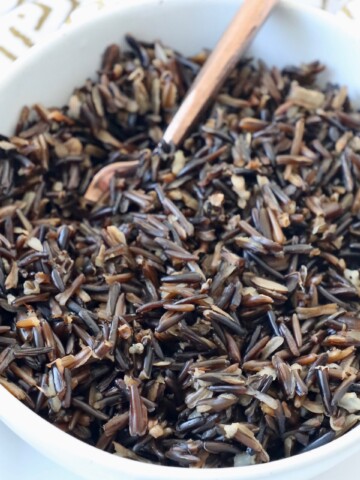
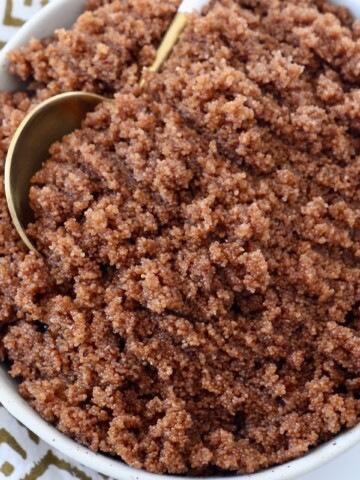
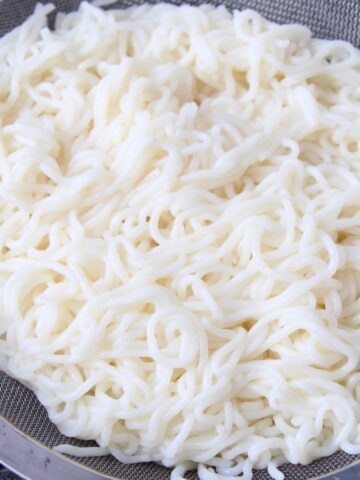
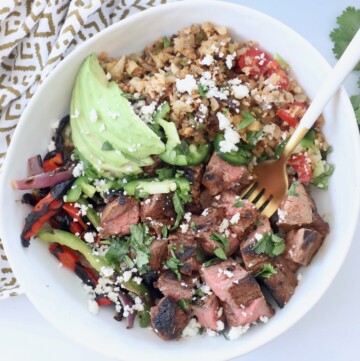
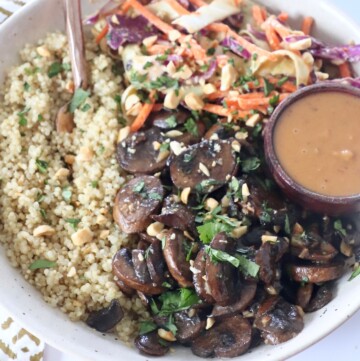
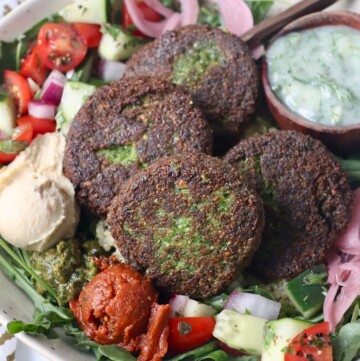
Comment Here!